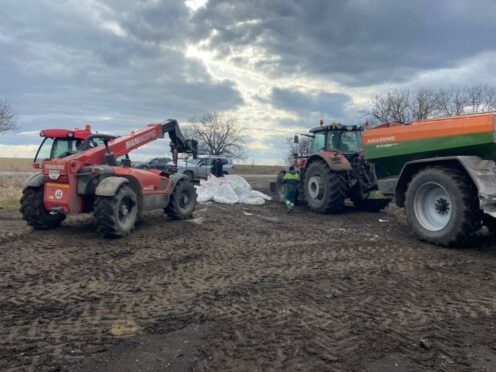Ukraine’s agriculture ministry has set out to the EU what it needs this year to maintain some level of self-sufficiency in food.
Once a major exporter with a thriving agricultural industry, the Russian invasion has closed off large areas of the countryside, making normal food production impossible.
It says its number one priority this spring and summer is for vegetable seeds and fuel for tractors to get crops sown and harvested.
It has also pressed for green corridors to be opened and maintained between Ukraine and Poland to ensure that food from the EU can get into Ukraine; this is centred around maintaining rail and road links.
The EU farm commissioner, Janusz Wojciechowski, who is Polish, has said he is sympathetic to these calls for support with green food supply corridors.
The EU has made clear it is fully committed to helping Ukraine, with long term plans to bring its huge agriculture industry closer to the EU.
Meanwhile, the future for Geographical Indication (GI) schemes in the UK remains unclear after Brexit.
A scheme put in place by the government has no standing outside the UK. This means products lack the protection and credibility of the original EU scheme many Scottish products joined.
Now the EU has confirmed plans to strengthen its scheme, in the hope that this will accelerate its growth.
It says the aim is to boost the production of ‘traditional products’ to drive economic activity in rural areas.
Registration and approval processes will be streamlined and moved online; businesses and member states will be able to bring in social and environmental standards as part of their product description, while protection for GIs will be strengthened.
Mountain product will also be added to the terms that can be used and protected.
This links into the EU’s multi-million euro food promotion programme for export sales, which uses the banner “Enjoy, it’s from Europe” to highlight the culinary tradition of all 27 member states.
Lastly, the European Commission has published a review of land rents across the EU.
Rents for farm land were highest in Italy and lowest in Slovakia and remote parts of Sweden.
The comparison was based on the cost of renting a hectare of arable or permanent pasture land for one year.
In all cases arable land was more expensive, and the top to bottom price range was from £700 a hectare in Italy to below £50 in the lowest priced countries.
Along with Italy, rents were high in the Netherlands and Denmark, reflecting availability and land ownership rules.
They were surprisingly low however, at well below £200 a hectare, in key agricultural countries including France, Germany and Spain.
- Richard Wright is an agricultural industry commentator.
